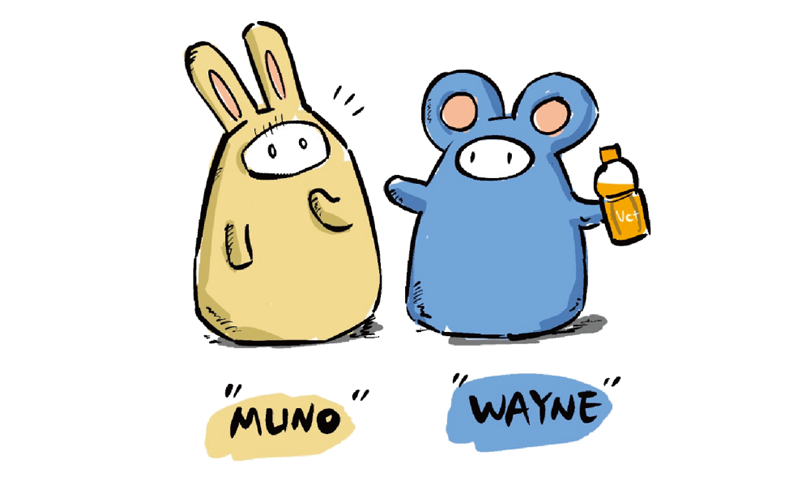
Catalog: YT3598
Size
Price
Status
Qty.
200μL
$450.00
In stock
0
100μL
$280.00
In stock
0
40μL
$150.00
In stock
0
Add to cart


Collected


Collect
Main Information
Target
Patched
Host Species
Rabbit
Reactivity
Human, Mouse
Applications
WB, IHC, IF, ELISA
MW
160kD (Observed)
Conjugate/Modification
Unmodified
Detailed Information
Recommended Dilution Ratio
WB 1:500-1:2000; IHC 1:100-1:300; ELISA 1:10000; IF 1:50-200
Formulation
Liquid in PBS containing 50% glycerol, 0.5% BSA and 0.02% sodium azide.
Specificity
Patched Polyclonal Antibody detects endogenous levels of Patched protein.
Purification
The antibody was affinity-purified from rabbit antiserum by affinity-chromatography using epitope-specific immunogen.
Storage
-15°C to -25°C/1 year(Do not lower than -25°C)
Concentration
1 mg/ml
MW(Observed)
160kD
Modification
Unmodified
Clonality
Polyclonal
Isotype
IgG
Related Products
Antigen&Target Information
Immunogen:
The antiserum was produced against synthesized peptide derived from human Patched. AA range:1-50
show all
Specificity:
Patched Polyclonal Antibody detects endogenous levels of Patched protein.
show all
Gene Name:
PTCH1
show all
Protein Name:
Protein patched homolog 1
show all
Other Name:
PTCH1 ;
PTCH ;
Protein patched homolog 1 ;
PTC ;
PTC1
PTCH ;
Protein patched homolog 1 ;
PTC ;
PTC1
show all
Background:
This gene encodes a member of the patched gene family. The encoded protein is the receptor for sonic hedgehog, a secreted molecule implicated in the formation of embryonic structures and in tumorigenesis, as well as the desert hedgehog and indian hedgehog proteins. This gene functions as a tumor suppressor. Mutations of this gene have been associated with basal cell nevus syndrome, esophageal squamous cell carcinoma, trichoepitheliomas, transitional cell carcinomas of the bladder, as well as holoprosencephaly. Alternative splicing results in multiple transcript variants encoding different isoforms. Additional splice variants have been described, but their full length sequences and biological validity cannot be determined currently. [provided by RefSeq, Jul 2008],
show all
Function:
developmental stage:In the embryo, found in all major target tissues of sonic hedgehog, such as the ventral neural tube, somites, and tissues surrounding the zone of polarizing activity of the limb bud.,Disease:Defects in PTCH1 are a cause of sporadic basal cell carcinoma (BCC) [MIM:605462].,Disease:Defects in PTCH1 are probably the cause of basal cell nevus syndrome (BCNS) [MIM:109400]; also known as Gorlin syndrome or Gorlin-Goltz syndrome. BCNS is an autosomal dominant disease characterized by nevoid basal cell carcinomas (NBCCS) and developmental abnormalities such as rib and craniofacial alterations, polydactyly, syndactyly, and spina bifida. In addition, the patients suffer from a multitude of tumors like basal cell carcinomas (BCC), fibromas of the ovaries and heart, cysts of the skin, jaws and mesentery, as well as medulloblastomas and meningiomas. PTCH1 is also mutated in squamous cell carcinoma (SCC). Could also be associated with large body size observed in BCNS patients.,Disease:Defects in PTCH1 are the cause of holoprosencephaly type 7 (HPE7) [MIM:610828]. Holoprosencephaly (HPE) [MIM:236100] is the most common structural anomaly of the brain, in which the developing forebrain fails to correctly separate into right and left hemispheres. Holoprosencephaly is genetically heterogeneous and associated with several distinct facies and phenotypic variability.,Function:Acts as a receptor for sonic hedgehog (SHH), indian hedgehog (IHH) and desert hedgehog (DHH). Associates with the smoothened protein (SMO) to transduce the hedgehog's proteins signal. Seems to have a tumor suppressor function, as inactivation of this protein is probably a necessary, if not sufficient step for tumorigenesis.,PTM:Glycosylation is necessary for SHH binding.,similarity:Belongs to the patched family.,similarity:Contains 1 SSD (sterol-sensing) domain.,subunit:Interacts with SNX17.,tissue specificity:In the adult, expressed in brain, lung, liver, heart, placenta, skeletal muscle, pancreas and kidney. Expressed in tumor cells but not in normal skin.,
show all
Cellular Localization:
Cell membrane ; Multi-pass membrane protein .
show all
Tissue Expression:
In the adult, expressed in brain, lung, liver, heart, placenta, skeletal muscle, pancreas and kidney. Expressed in tumor cells but not in normal skin.
show all
Research Areas:
>>cAMP signaling pathway ;
>>Hedgehog signaling pathway ;
>>Axon guidance ;
>>Pathways in cancer ;
>>Proteoglycans in cancer ;
>>Basal cell carcinoma
>>Hedgehog signaling pathway ;
>>Axon guidance ;
>>Pathways in cancer ;
>>Proteoglycans in cancer ;
>>Basal cell carcinoma
show all
Signaling Pathway
Reference Citation({{totalcount}})
Catalog: YT3598
Size
Price
Status
Qty.
200μL
$450.00
In stock
0
100μL
$280.00
In stock
0
40μL
$150.00
In stock
0
Add to cart


Collected


Collect
Recently Viewed Products
Clear allPRODUCTS
CUSTOMIZED
ABOUT US
Toggle night Mode
{{pinfoXq.title || ''}}
Catalog: {{pinfoXq.catalog || ''}}
Filter:
All
{{item.name}}
{{pinfo.title}}
-{{pinfo.catalog}}
Main Information
Target
{{pinfo.target}}
Reactivity
{{pinfo.react}}
Applications
{{pinfo.applicat}}
Conjugate/Modification
{{pinfo.coupling}}/{{pinfo.modific}}
MW (kDa)
{{pinfo.mwcalc}}
Host Species
{{pinfo.hostspec}}
Isotype
{{pinfo.isotype}}
Product {{index}}/{{pcount}}
Prev
Next
{{pvTitle}}
Scroll wheel zooms the picture
{{pvDescr}}























